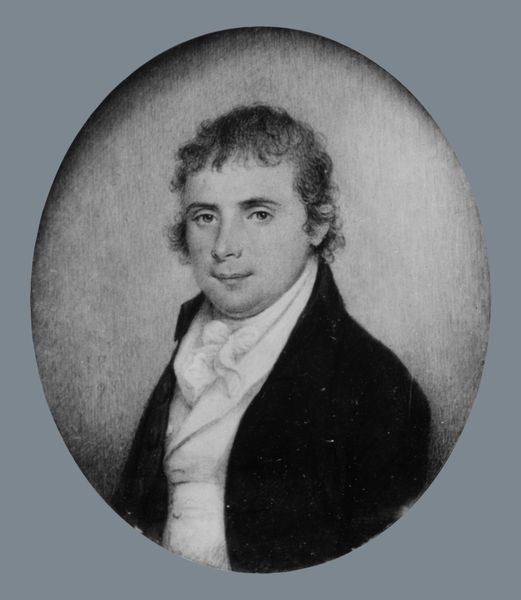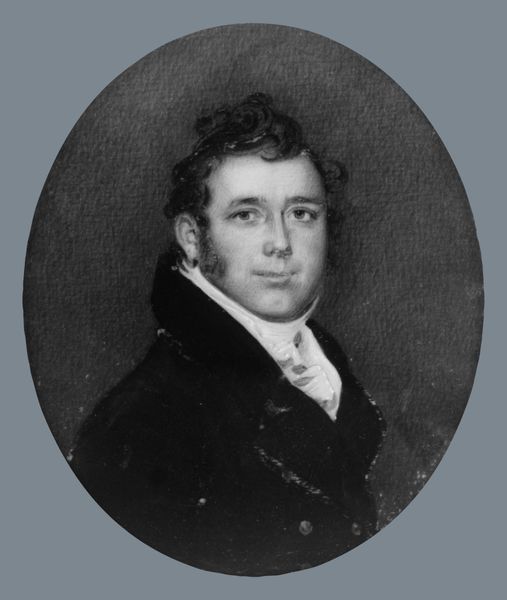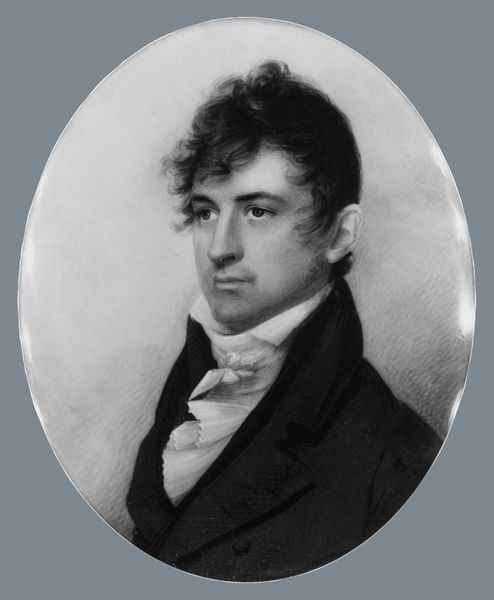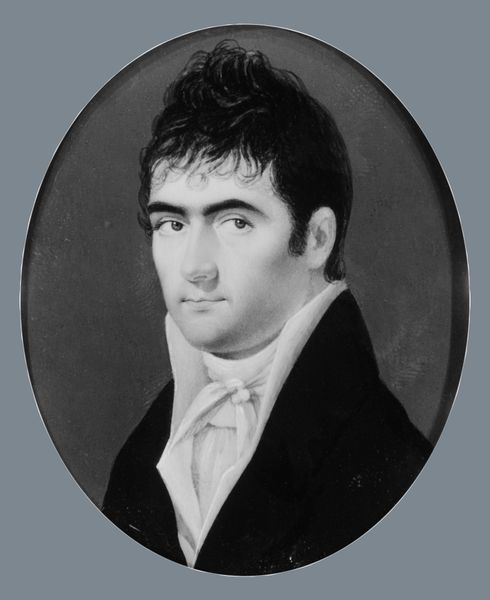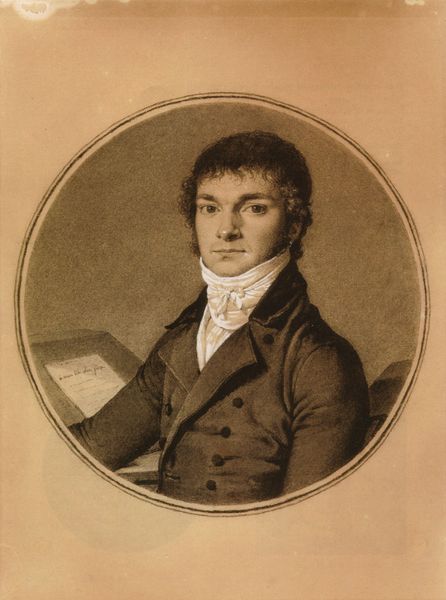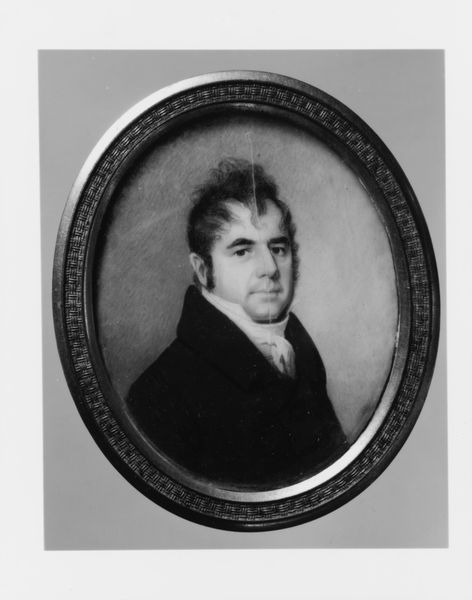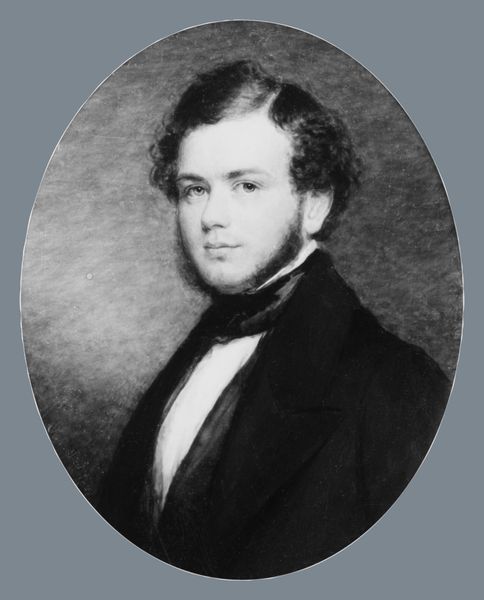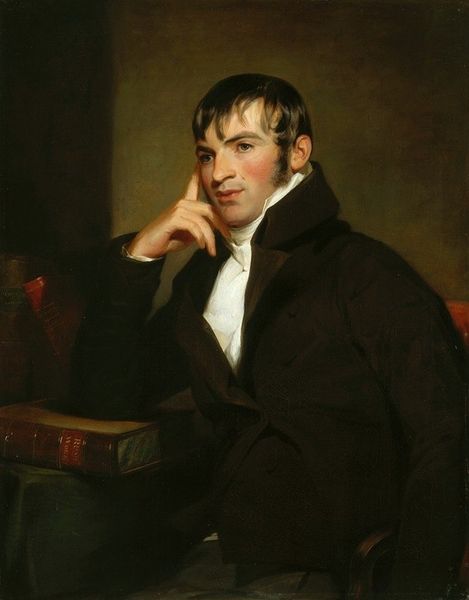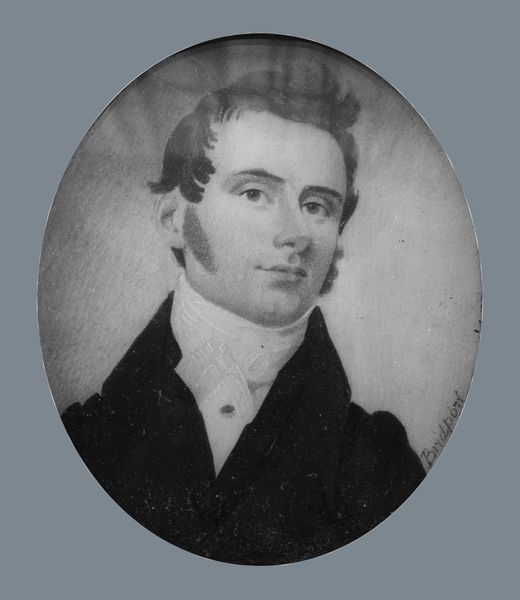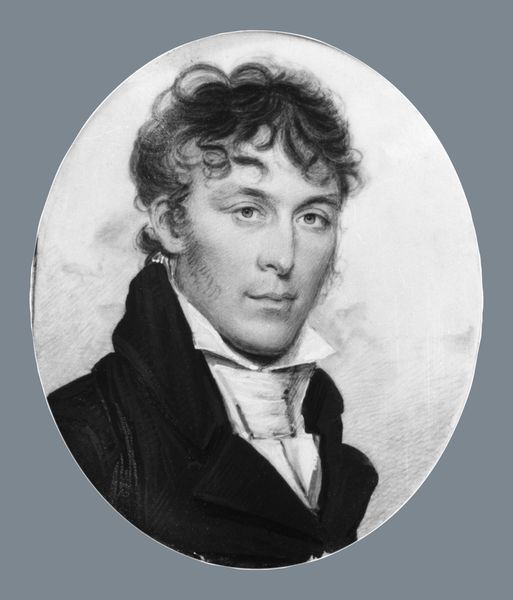
painting
#
portrait
#
neoclacissism
#
portrait
#
painting
#
academic-art
Dimensions: 2 19/32 x 2 1/8 in. (6.6 x 5.4 cm)
Copyright: Public Domain
Curator: What a somber, yet striking portrait. There's a stillness that emanates from the subject's gaze. Editor: Agreed. There’s also a subtle quality of light that highlights his features. This painting, Joseph Dugan, was completed in 1815 by Joseph Wood. The piece now resides at The Met. Curator: Wood's placement of Joseph Dugan within a neoclassical tradition is clear, but I'm curious about the politics surrounding such commissions. Who was Joseph Dugan in relation to the artist and what did his portrait signify at the time? Was it a symbol of status, an attempt at upward mobility perhaps? Editor: Good questions. Beyond the social position that having your portrait painted might represent, let’s also think about the materiality. It appears to be an oval, so presumably either oil on board or possibly ivory. Either way, it's intended as a precious object, carefully rendered, likely for private display or possibly to be worn as a miniature. Curator: Indeed. Miniatures often carried deeply personal, even sentimental, weight. Did Wood portray other men of similar status? Context is key here; if Dugan was connected to certain sociopolitical circles, or to specific industries, his portrait might subtly convey affiliation or aspirations through pose, setting, or even the perceived cost of his clothing. Editor: The details of manufacture tell a parallel story. Think about where Wood would have sourced his pigments and supports; did he have a workshop assisting him, what was his method for grinding and mixing pigment? All of this would contribute to both the quality of the object and what it represents in material terms. The neoclassical style suggests certain forms of patronage too, right? Curator: Absolutely, patronage in that era was intricately tied to societal power structures and, ultimately, representation. Even a seemingly simple portrait tells volumes if we consider these intertwined levels of meaning and materiality. It pushes us to go beyond surface-level appreciation. Editor: Yes, understanding art as both a product and reflection of a network of means can expose social relationships sometimes hidden in the art object. I wonder where Mr. Dugan is now... Curator: Or how much Wood earned from painting it, and what became of his family after the commission. Food for thought.
Comments
No comments
Be the first to comment and join the conversation on the ultimate creative platform.

